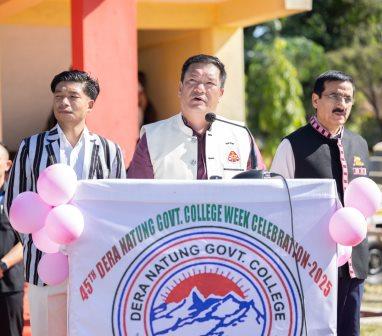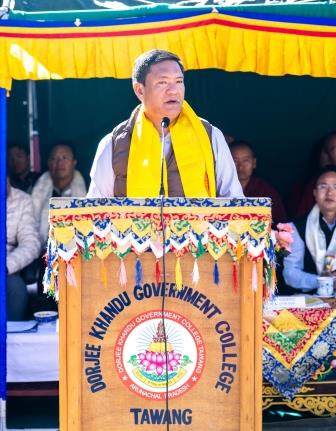-
Cadet death: East Siang Police arrests 3 Sainik School staffers
-
 CM lauds DNGC for contribution to higher education over 46…
CM lauds DNGC for contribution to higher education over 46…
-
 Sona stresses on holistic education to truly nurture future generations
Sona stresses on holistic education to truly nurture future generations
-
High school student found dead in school bathroom, no signs…
-
Young Birders’ Month celebrated in Ziro Valley
-
Trigonometry concludes 4th annual convention
-
Kamle, Capital shine as veterans rule the court at Rupa…
-
Basic disaster response training concludes
-
 Governor graces Arunachal Pradesh Police Raising Day
Governor graces Arunachal Pradesh Police Raising Day
-
 CM inaugurates new blocks of DK govt college
CM inaugurates new blocks of DK govt college
WHO Chief Scientist Soumya Swaminathan on Wednesday while deliberating on Covid has delivered a priceless message which has got a special relevance for India- it’s time to wake up and invest more in bringing improvement in public health and primary healthcare sectors. While terming it as the most important lesson the pandemic has taught, she has also drawn attention to Covid successes achieved by those countries who have taken adequate care of these sectors during the earlier decades. And there is hardly any need to mention that India is not among them. The pandemic has exposed many fault lines that have remained undetected in the country’s healthcare system since decades and how fragile the fundamentals i.e. those concerning the public and primary layers have been. The future days will tell whether the lessons have been taken seriously or not, but facts are facts. India as a welfare nation, as of now, has very little in its health vault to assure emphatically to its citizens that in case an epidemic or pandemic of the Covid level strikes, the public healthcare mechanism will serve purposefully as the first line of defence.
All throughout the previous tumultuous months, particularly the initial ones, across the country inclusive of Arunachal, the picture has been the same. Lack of basic health infra facilities, let alone the Covid-specific needs, along with shortage of critical manpower comprising doctors, nurses, paramedics and others have been widely reported by the media. As cases rose, helplessness increased proportionally and it’s not the Covid patients alone who got a taste of the health system’s infirmity, the non-Covid patients who needed routine healthcare services for survival underwent the trauma of an equal scale. Treatments for critical renal patients needing routine dialysis, heart attacks and cases for countless other general illnesses have to be deferred indefinitely, unmasking the extreme limitation of the healthcare structure. For getting an answer why it has been so, it’s necessary to look how much the country has spent and is spending currently on public health. In terms of GDP, it has been just 1% over the last 15 years which is among the world lowest and currently, after the pandemic-induced ‘compulsions’ it’s around 1.15%. And thanks to the pandemic, a target of increasing the spending to 2.5 % of the GDP by 2025 has now been set by the central government. It will be a further test for the country’s public health infrastructure when the vaccination programme will be rolled out.
It will be difficult to rectify the accumulated negligence instantly. But with serious efforts and strong political will, perceptible changes can be made. The country should do it now before it’s too late.

Kenter Joya Riba
(Managing Editor)She is a graduate in Science with post graduation in Sociology from University of Pune. She has been in the media industry for nearly a decade. Before turning to print business, she has been associated with radio and television.
Email: kenterjoyaz@easternsentinel.in / editoreasternsentinel@gmail.com
Phone: 0360-2212313

